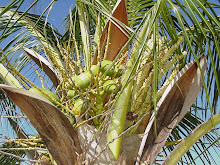Who hasn't, since the first time we dug in the dirt as a kid (usually with one of our mom's spoons), wanted to find something cool?
I remember when my parents were building our new house (circa 1970) and we found some Indian arrowheads in the disturbed soil.
The Colonel and I have always wanted to work on a dig with a real archaeologist. We enjoy watching shows about archaeology and we subscribe to an archaeology magazine.
We finally got our chance to be on a real archaeological dig with a real, professional archaeologist through a county community service program (for a nominal fee).
Registered Professional Archaeologist April Watson of Florida Atlantic University lead a two-day workshop exploring the grounds of a local house. The workshop included a classroom component that taught information on archaeological exploration and procedures, professional conduct, mandates governing the exploration and procedures used in the profession. The classroom part of the workshop took place on day one. When it was over, and we had our lunches eaten, it was time to go into the field and get our hands dirty.
There were six other like-minded "students" who participated in the workshop along with The Colonel and I. April Watson was a very good teacher and was patient with us as we learned the ropes of archaeological field work.
April started digging the first test hole.
As she dug, each shovelful was sifted in a screen by the students.
As April was digging and we were sifting, she told us how to document anything of interest that may have been found in the test hole. Items would be put in a collection bag. The bag was labeled with the date, site test number and the initials of the digging team. Each site test had paperwork to go along with it. This paperwork documented what was found in the test hole, at what depth and what type/layer of soil it was found in.
April had a nifty little tool that helped to identify the soil/sand color.
After April's demonstration with the first test hole, it was our turn to dig our own and document anything of interest. Our test hole sites were spaced out in an orderly grid and then we broke up into teams to begin digging our assigned test holes.
The Colonel and I began our first test hole. He did the digging and I did the documenting. Our test holes had to be dug to a depth of three feet, or until we hit water. On day one of the dig, The Colonel and I worked two test holes by ourselves. We did not find much of interest except in our last hole of the day. We found an old key.
We all stopped digging in the late afternoon. We would begin day two's dig bright and early the next day. Everyone had a great day and were looking forward to the next day.
On day two of the dig, The Colonel and I had one of the other students join our digging crew. Some of the older women students had a bit of trouble with the digging by themselves on day one, so were added to some of the other crews.
Judy became our crew's record keeper, The Colonel dug the holes and I sifted the shovelfuls of sand and dirt.
On day two we located to another section of the grounds. One of the students, who had grown up in the area, was our trailblazer to the new location.
Each crew dug at least four test holes on the second day. No one found much of anything.
But we sure learned a lot and had fun!
The Colonel and I had a great time (and weren't too sore the next day) learning about the proper way to conduct an archaeological dig under April Watson and we met some very nice people too.
We would love to do this again!



































